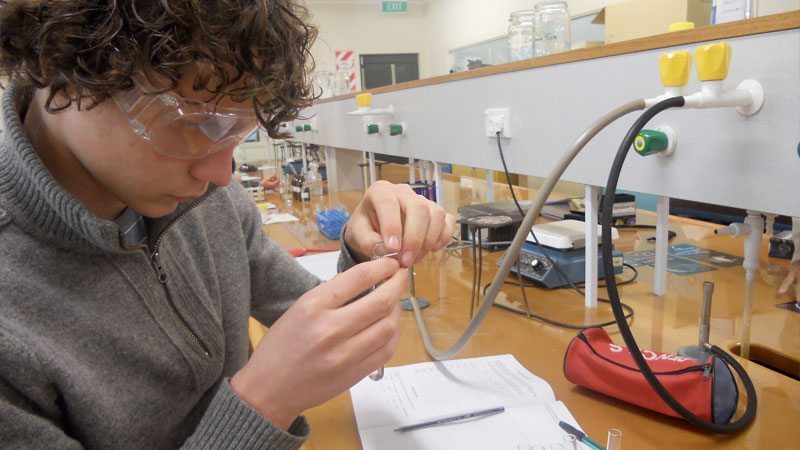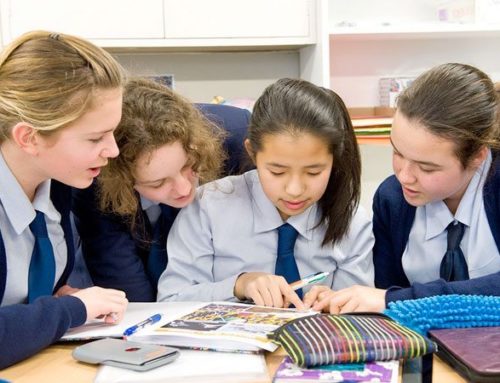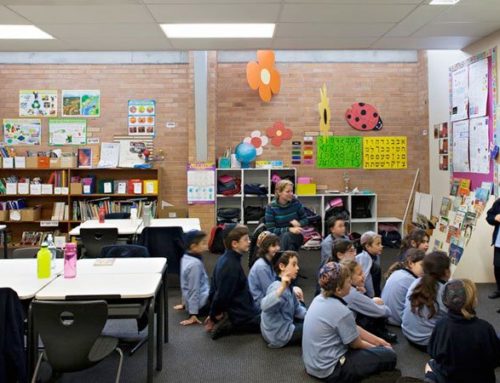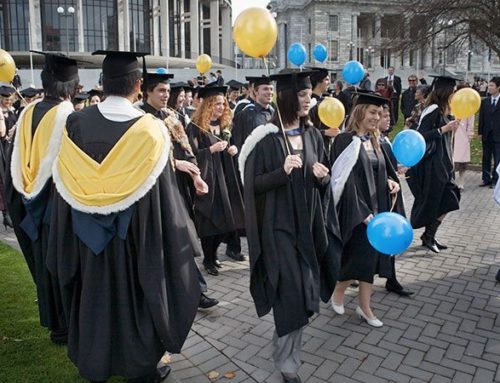 The New Zealand Curriculum is built around the acquisition of essential academic and practical skills. It identifies 7 academic or ‘essential learning’ areas:
The New Zealand Curriculum is built around the acquisition of essential academic and practical skills. It identifies 7 academic or ‘essential learning’ areas:
- Language and languages
- Mathematics
- Science
- Technology
- Social sciences
- The arts
- Health & physical well-being
These are balanced by 8 practical or ‘essential skills’:
- Communication skills
- Numeracy skills
- Information skills
- Problem-solving skills
- Self-management and competitive skills
- Social and co-operative skills
- Physical skills
- Work and study skills
Each term, most schools prepare student Progress Reports and hold parent-teacher evenings.
Subjects Taught At New Zealand Schools
The following is a general list of subjects taught in New Zealand schools. Not all schools offer all the subjects listed and others may offer additional disciplines. Some subjects are optional.
| Primary Schools | ||
| Mathematics | Art | Health |
| English language | Physical education | Technology |
| Secondary Schools | ||
| Accounting | Home Economics | Agriculture & Horticulture |
| Human Biology | Art | Japanese |
| Biology | Legal Studies | Business Studies |
| Maori Language | Chemistry | Classical Studies |
| Mathematics | Computer Studies | Media Studies |
| Design Technology | Music | Drama |
| Photography | Economics | Physical Education |
| English | Physics | French |
| Science | Geography | Social Studies |
| German | Spanish | Graphics & Design |
| Textiles | Clothing & Design | Health |
| Typing/Text | Information Management | History |
School Terms/Semesters
The school year begins in late January or early February, after a summer holiday of about 6 weeks, and ends in December. It is divided into 4 terms with breaks of two to three weeks between them.
Secondary school students have slightly longer holiday’s then primary school students.
Check with your local New Zealand school for actual term dates, however the terms usually run as follows:
Term 1 – End of January to early April
Term 2 – Late April to end of June
Term 3 – Mid July to late September
Term 4 – Mid October to mid December (or early December for secondary schools)
Examinations
New Zealand’s qualifications system is changing from traditional examination based awards to standards based qualifications. In 2002, level 1 of the National Certificate of Educational Achievement (NCEA) replaced School Certificate. The NCEA will replace Sixth Form Certificate in 2003 and University Bursaries in 2004.
National Certificate of Educational Achievement
NCEA (National Certificate of Educational Achievement) is New Zealand’s main national qualification for secondary school students and part of the National Qualifications Framework.
The Qualifications Framework covers industry and education qualifications from year 11 (formerly Form 5) of secondary schooling and entry level to vocations, through to post-graduate level.
All qualifications currently on the Framework are made up of national standards. A standard describes what a learner should aim to achieve in a skill or knowledge area. Standards are set by written criteria along with a national moderation system. Learners who meet all requirements get credit for that standard; those who don’t may be reassessed when they are ready.
Each standard is at a level from 1 to 8. Level 1 is similar to School Certificate level; level 2 to Sixth Form Certificate; levels 3 and 4 are similar to University Bursaries. Each standard also has a credit rating.
Schools can also use many standards from beyond the school curriculum. Any number or combination of standards may be assessed within a course, so schools can develop courses to suit their students.
Students accumulate Framework credits towards National Certificates and National Diplomas. As well as being able to work towards a range of National Certificates, eg, National Certificate in Computing, from 2002 school students will work towards a general qualification, the National Certificate of Educational Achievement (NCEA). Students can start on Framework qualifications at school and carry on in the workplace or tertiary studies.
NCEA provides the pathway to tertiary education and workplace training and gives everyone a full picture of what students know and can do.
- Challenges students of all abilities, in all learning areas
- Reports more details about a student’s achievement
- Is officially recognised in New Zealand and internationally
- Is recognised by employers, universities and polytechnics and used as the benchmark for selection
- Provides opportunities to begin studying for tertiary and industry qualifications * Enables students to gain credits from traditional school curriculum areas AND alternative school curriculum programmes
- Has exams as well as internal assessment
- Has a national system for checking internal assessments
- Shows credits and grades for separate skills and knowledge in some standards
The National Qualifications Framework contains two types of national standards: achievement standards and unit standards. Credits from all achievement standards and all unit standards count towards NCEA.
Choosing A School
Most New Zealand students attend state-funded schools and every student has the right to enrol at the state school nearest to their home. If the school is at risk of overcrowding, it can set a ‘home zone’ that is geographically defined. Students living in this zone have the right to go to that school. Those living outside the zone can be enrolled only under special circumstances. These include situations where students have brothers or sisters attending the school or require access to special programmes such as special education or Maori language. If the school is still at risk of over-crowding, selection is made through a supervised ballot.
ERO reports are available at no charge from New Zealand schools and ERO offices.
Families also have the right to visit schools and meet with the principal and staff before deciding to enrol their children as students.
State Schools
State schools are fully funded by the Government. At primary and intermediate level they are co-educational with classes that include both boys and girls. Both co-educational and single-sex schooling is available at secondary level.
State schools do not charge fees, however parents are expected to make donations towards the support of special programmes or services. These are also charges for stationery and uniforms. Meals are not provided but snacks can generally be purchased from the school ‘Tuck Shop’, but many parents prefer to provide a packed lunch.
Integrated Schools
term ‘integrated schools’ generally refers to schools with a religious focus – usually Roman Catholic in denomination that used to operate as private institutions. In recent years, these schools have been integrated into the state system, hence the name, integrated schools, and receive government funding. Although they follow the state curriculum requirements, all have retained their special religious or philosophical character. A small number of institutions, such as Montessori or Rudolf Steiner schools, are secular in character.
Private/Independent Schools
Private or independent schools receive only limited government funding and are almost entirely dependent on income derived from student fees. There are no standard fees as each school determines its own fee scale. Fees also vary according to levels, with fees in Years 12 and 13 usually significantly higher than those charged in Years 9 and 10.
Fees at primary schools also vary according to level, although these are generally much lower than secondary school fees.
Private schools are governed by their own independent boards but must meet government standards in order to be registered and they are also subject to the same ERO audits as state schools.
Boarding Schools
Boarding schools exist mainly at secondary school level. Currently 78 state and integrated schools and 24 private schools have boarding arrangements.
Correspondence School
The Correspondence School teaches a full range of school level courses.
Home-based Schooling
Home-based schooling must meet the same standards as registered schools, and approval to exempt the student from regular schooling must be obtained from the Ministry of Education.
A small annual grant is available for teaching materials.
Home schooling accounts for less than 1% of school enrolments.
Uniforms
Most schools require students to wear a uniform at all times unless the school has an optional uniform policy. School uniforms are sold by most major department stores and some schools also operate their own Uniform Shops and sell both new and second-hand items.
Discipline
Teachers are not allowed to physically punish students in their care. Legal disciplinary methods include removal of privileges, extra homework or detention. Parents or guardians are advised in advance if a child is given detention, as this will require the child to stay at school for a specified time after the end of the standard school day.
For serious offences, students may be suspended from school for a period of time and if they are over 16 years of age, they can be expelled permanently. Expulsion generally occurs when a student’s conduct either sets a dangerous example to other students or threatens their safety. There are formal procedures for suspending or expelling a student.
Homework
Most secondary and primary schools expect students to do homework. Each school has its own rules on the amount and type of homework.
School Transport
Parents or guardians are responsible for ensuring that a child can get to school. Each year about 100,000 children use school buses. Although school bus services are contracted by the Ministry of Education, students are expected to meet the costs of fares.
If a child has to travel a long distance to school, and there is no public transport or school bus service, financial assistance can be provided. Financial assistance and/or bus and taxi services are provided for special education students.
Changing Schools
If you plan to change schools, the principal of your child’s current school should be informed as soon as possible.
Transfer involving a change in the level of schooling, such as from primary to intermediate or intermediate to secondary, require additional documentation. Details of application procedures are provided by the school the student plans to transfer to. Most intermediate and secondary schools have open days.







Leave A Comment